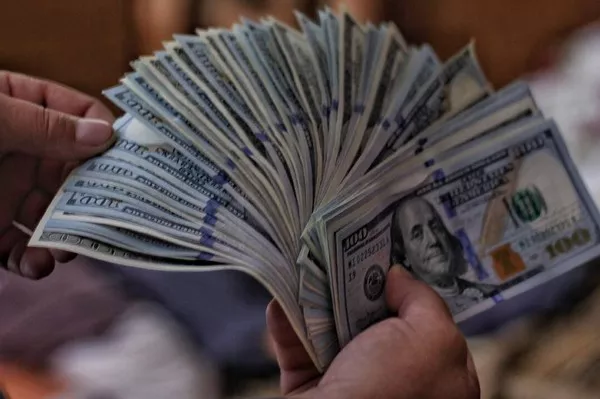In the complex world of finance and economics, the decisions made by central banks, particularly the Federal Reserve in the United States, play a pivotal role in shaping the direction of the economy. One such decision that garners significant attention is a Federal Reserve rate hike. In this article, we will delve into the concept of a 100-point Federal Reserve rate hike, exploring its meaning, potential implications, and the factors that drive such a decision.
Defining a 100-Point Federal Reserve Rate Hike:
Before we delve into the specifics of a 100-point rate hike, let’s first understand what a Federal Reserve rate hike entails. The Federal Reserve, often referred to as the Fed, is the central banking system of the United States. One of its primary tools for influencing the economy is the federal funds rate.
The federal funds rate is the interest rate at which banks lend to each other overnight to meet their reserve requirements. By adjusting this rate, the Fed aims to either stimulate economic activity or curb inflation. A rate hike occurs when the Fed decides to increase this interest rate.
Now, a 100-point Federal Reserve rate hike refers to an increase of 1% in the federal funds rate. The Fed typically adjusts rates in increments of 25 basis points (0.25%), making a 100-point hike a substantial and impactful decision.
Implications for Borrowers and Consumers:
One of the immediate effects of a 100-point rate hike is an increase in the cost of borrowing. This impacts various segments of the economy, including consumers. For individuals with variable-rate loans, such as adjustable-rate mortgages or credit card balances tied to the prime rate, monthly payments are likely to rise. This can lead to higher debt-servicing costs for households, potentially reducing disposable income.
Moreover, higher interest rates can dampen consumer spending. When the cost of borrowing rises, individuals may be less inclined to make large purchases, such as homes or cars. This, in turn, can have a cascading effect on industries dependent on consumer spending, potentially leading to a slowdown in economic activity.
Impact on Businesses and Investments:
Businesses, too, are significantly affected by a 100-point Federal Reserve rate hike. The cost of financing operations and expansion projects increases as interest rates rise. Companies with high levels of debt may face challenges in servicing their obligations, leading to potential financial distress.
Investors in the financial markets closely monitor rate hike decisions, as they influence the performance of various asset classes. Generally, higher interest rates can lead to lower stock prices, as the cost of capital for companies rises. Bond prices, inversely related to interest rates, may also experience declines. Investors often reallocate their portfolios in response to changing interest rate environments, seeking assets that are less sensitive to rate hikes.
Effect on Housing and Real Estate:
The real estate market is particularly sensitive to changes in interest rates. A 100-point Federal Reserve rate hike can lead to higher mortgage rates, affecting the affordability of homes. Homebuyers may find themselves facing increased monthly payments, potentially leading to a slowdown in the housing market.
Conversely, rising interest rates can benefit savers and investors in real estate. Higher rates may lead to increased yields on certain fixed-income investments, making them more attractive compared to riskier assets. Real estate investors may also see opportunities as property values adjust in response to changing interest rate dynamics.
Inflationary Pressures and Economic Growth:
The Federal Reserve closely monitors inflation as part of its dual mandate, which includes promoting maximum employment and stable prices. A 100-point rate hike is often employed as a preemptive measure to curb inflationary pressures. By raising interest rates, the Fed aims to cool off an overheating economy and prevent excessive price increases.
While higher interest rates can contribute to slowing economic growth, they are essential for maintaining price stability. Inflation erodes the purchasing power of money, and central banks use interest rate adjustments to keep it within a target range. A well-timed rate hike can contribute to a more balanced and sustainable economic environment.
Global Ramifications:
The decisions made by the Federal Reserve have far-reaching implications beyond U.S. borders. A 100-point rate hike can lead to shifts in global capital flows and impact emerging market economies. Higher U.S. interest rates can attract foreign investment, potentially leading to capital outflows from other regions.
Furthermore, changes in the value of the U.S. dollar can influence global trade dynamics. A stronger dollar, often associated with higher interest rates, can make U.S. exports more expensive and less competitive in international markets. This, in turn, may affect the economic performance of trading partners.
SEE ALSO What Causes The Fed To Raise Interest Rates
Conclusion:
A 100-point Federal Reserve rate hike is a significant monetary policy move with wide-ranging implications for individuals, businesses, and financial markets. It reflects the central bank’s efforts to strike a balance between promoting economic growth and preventing runaway inflation. As investors and economic participants navigate the complexities of a changing interest rate environment, staying informed about the rationale behind such decisions and their potential consequences is crucial for making sound financial decisions.


